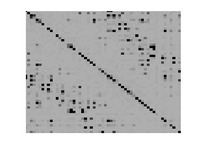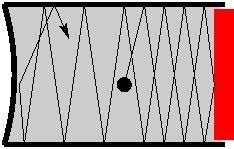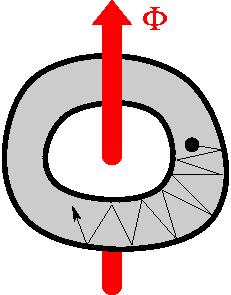
The theory uses a resistor network picture of transitions, and gives different results compared with linear response theory (Kubo) whenever the perturbation matrix in the Hamiltonian is "textured" or "sparse" [notably if its elements have log-normal or log-box rather than Gaussian distribution].
The theory has been applied to obtain novel results for the mesoscopic conductance of rings with very strong or very weak disorder, and also in order to resolve long standing questions regarding the applicability of the variable range hopping picture and the absorption of low frequency radiation by small metallic grains.


The figure illustrates model systems of interest: a Billiard with a moving wall, and a Ring with a time dependent magnetic flux. The "sparsity" of the perturbation matrix reflects the slight deviation of the Billiard from intelligibility, due to the deformation of the boundary (as in the figure) or due to the presence of disorder.
Energy absorption by cold atoms
(2011)
A recent application of semi linear response theory (SLRT)
concerns the rate of heating of cold atoms in weakly chaotic
optical billiards. This work extends older works where we have
improved the "wall formula" of nuclear physics taking into account
the type of wall deformation involved [notably we have argued that
shaking or dilating a box does not lead to heating in the DC
limit, unlike any other generic deformation]. We emphasize that
SLRT rather than liner-response theory is essential in
experimentally relevant circumstance if the system is
quasi-isolated from its environment. SLRT is also the appropriate
framework for the incorporation of weak interaction effects. Review: Energy absorption by "sparse" systems [arXiv] [pdf] (Prague 2012).